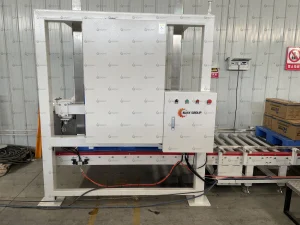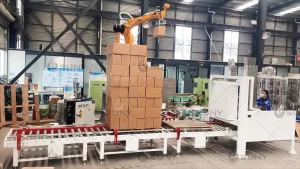In today’s fast-paced world, industries are constantly striving for efficiency. Whether you’re in logistics, manufacturing, or warehousing, streamlining operations can make a significant difference. A vital piece of technology playing a key role in this is the Pallet Auto Feeder. These machines are transforming the way businesses handle pallet loading and unloading, providing speed, precision, and cost savings. But what exactly is a pallet auto feeder, and how does it benefit your business? In this article, we’ll dive into the details of pallet auto feeders, answer your frequently asked questions, and highlight their transformative impact on warehouse operations.
What is a Pallet Auto Feeder?
A Pallet Auto Feeder is an automated system designed to handle and deliver pallets to the required loading or unloading positions in a warehouse or production line. It operates by automatically pushing or placing pallets on a conveyor system, reducing the need for manual intervention. our systems can store up to 10 pallets at a time, which enhances productivity and ensures that your operations run without delay. These systems are perfect for environments where high-volume pallet handling is necessary, such as large-scale warehouses, factories, or distribution centers.
The fundamental advantage of a pallet auto feeder lies in its ability to increase throughput while maintaining precision. Rather than having workers manually handle pallets, which can be time-consuming and prone to human error, these automated systems work efficiently 24/7, freeing up valuable manpower for more critical tasks.
How Does a Pallet Auto Feeder Work?
Understanding how a pallet auto feeder functions can help you appreciate its value.
Storage Capacity: A pallet auto feeder can store multiple pallets, typically up to 10 units, in a queue. This allows for seamless operation without any delays, as pallets are ready to be fed onto the conveyor.
Pallet Transfer: The machine uses conveyor belts or robotic arms to push the pallets from the storage area to the desired location. Once a pallet is in position, the feeder can automatically adjust the pallet’s orientation to match specific requirements, whether for stacking, wrapping, or other tasks.
Automation: As the system operates automatically, there’s minimal human interaction required, which decreases labor costs and boosts overall efficiency.
Top Benefits of Using a Pallet Auto Feeder
If you’re still on the fence about incorporating a pallet auto feeder into your operations, here are the top benefits that will make you reconsider:
Increased Productivity: These machines can operate continuously, ensuring that pallets are consistently moved without any slowdowns. Whether you need pallets for stacking, packing, or shipping, the system can handle high volumes without breaking a sweat.
Reduced Labor Costs: With automation taking care of the heavy lifting, you no longer need to hire as many workers for manual pallet handling, resulting in significant labor savings.
Improved Safety: Pallet auto feeders help reduce workplace injuries that often occur during manual pallet handling. By eliminating human interaction with the pallets, the risk of accidents is greatly diminished.
Enhanced Accuracy: Automation ensures that pallets are loaded in the right spot at the right time. This leads to more accurate and efficient operations, minimizing the chances of errors and product loss.
Scalability: As your business grows, your pallet handling needs will increase. A pallet auto feeder can be easily scaled to meet rising demands without compromising operational efficiency.
FAQ
Q1: Can a pallet auto feeder be integrated with existing equipment?
Yes! Many pallet auto feeders are designed to work seamlessly with other warehouse equipment like palletizing robots, conveyors, and automated packaging machines. This integration helps to create an efficient and cohesive workflow in your operations.
Q2: Is maintenance required for a pallet auto feeder?
Like any machinery, regular maintenance is essential for ensuring the longevity and optimal performance of a pallet auto feeder. This includes routine checks on the conveyor system, sensors, and electrical components.
Q3: Can pallet auto feeders be customized for different pallet sizes?
Yes, many systems are customizable to handle various pallet sizes. It’s important to choose a system that meets the specific requirements of your warehouse operations.
In the ever-evolving landscape of logistics and warehousing, pallet auto feeders are an indispensable solution for businesses aiming to boost efficiency, reduce costs, and enhance safety. By automating the pallet loading and unloading process, companies can streamline operations, increase throughput, and focus resources on more critical tasks. Whether you’re looking to automate a small warehouse or a large distribution center, a pallet auto feeder is a game-changer for businesses of all sizes.


